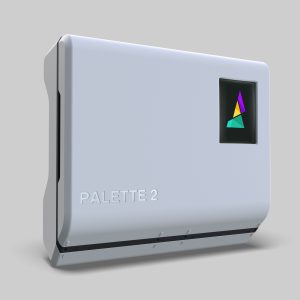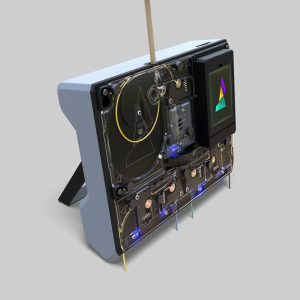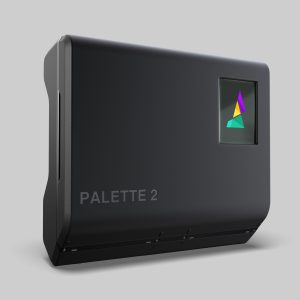Most of us still get excited about the opportunity to cast aside single-color fused filament fabrication (FFF) and explore the potential of multi-colored, multi-material printing, typically reserved for higher end binder jet and inkjet technologies. While historically a more challenging and complex technology, multi-color printing often allows the user more opportunities with add-on hardware.
As always, accessibility and affordability are what really allow new hardware, software, and materials to catch on. With this in mind, a research team from the Computer Science and Engineering Department at Texas A&M University (working also with researchers from Japan) has developed an interactive system for 3D printing with multiple colors and multiple materials using a single printhead—and without any hardware updates necessary.
Programmable Filament works with existing 3D printers, splicing multiple filament segments into a single thread. The process begins by simply printing a new strand of filament made up of varying existing strands of filaments. This new multicolored, multi-material wire of filament can then be used to print a multicolored, multi-material object. The technique is meant to work with less expensive FDM single-nozzle 3D printers, and is “built upon computational analysis and experiments,” as outlined in “Programmable Filament: Printed Filaments for Multi-material 3D Printing.”

Programmable Filament is a novel 3D printing technique that enables users to 3D print an object with multiple materials using an FDM printer without any hardware modification. (From left to right) First, users generate a filament that contains multiple materials, to feed into the extruder, then 3D print an object in full color.
While many may find this reminiscent of the Palette technology with open-source software released by Mosaic Manufacturing in 2018, here the researchers explained that they were inspired by DasMia, an Instructables user innovating with a thin, wire-like filament:
“… we expand on the concept to fabricate a programmable filament connecting several segments of various materials into a single filament based on the user’s specifications (referred to as printed filament). We demonstrate that the printed filament can be used in the same way as a conventional filament, i.e., extruded through a standard nozzle, requiring no hardware modification.”
While DasMia focused on producing a pretty awesome-looking rainbow filament and Mosaic offers a variety of ways for users to innovate after upgrading their systems and relying on Canvas Hub for support, Programmable Filament is meant to streamline previous challenges found in dual printing, cutting down on shifting and mixing of colors and materials between segments. Their goal is also to present more options to users, overriding some of the limiting factors of previous technology and methods. This also reverses more common but less effective techniques focusing on post-processing with brushing and painting. With pre-processing of filament, the printer does the work in the fabrication of multi-faceted items.

Printing procedure of a filament: (a) Printing starts with one color, (b) it pauses upon completion of printing all segments, allowing the user to change the material. (c-d) The 3D printer prints the remaining segments avoiding collision with prior segments, (e) then prints stitches to join adjacent segments.
Upon splicing together segments to create one filament, a long spiral is produced. The authors claim that this can be used just like standard 3D printing filaments. As a programmable filament, however, the material can be fine-tuned for required characteristics like thickness, roundness, and more. Users are able to manipulate the printing path accordingly, establishing how much material is needed for printing segments, as well as the length of the spiral.

An exemplary printed filament and object printed using it: The layers of (a) and (b) are printed in the same segment length (200 mm), but appear with different layer counts.
While this process offers new opportunity for users, the implications for the future of filaments is vast in terms of the ability to produce on-demand materials that can be programmed and customized in extreme detail.
“In this future filament supply-chain, the customer and manufacturer can also closely work together, empowering the potential for manufacturers to become aware of the emerging needs in producing new materials for mass manufacturing,” explained the researchers.
This work has been accepted for the ACM UIST 20 conference, held from October 20-23, 2020. Find out more about the HCI (human-computer interaction) virtual event here.
[Source / Images: “Programmable Filament: Printed Filaments for Multi-material 3D Printing”]
The post Programmable Filament: Multicolor & Multimaterial 3D Printing with No Hardware Upgrades appeared first on 3DPrint.com | The Voice of 3D Printing / Additive Manufacturing.



